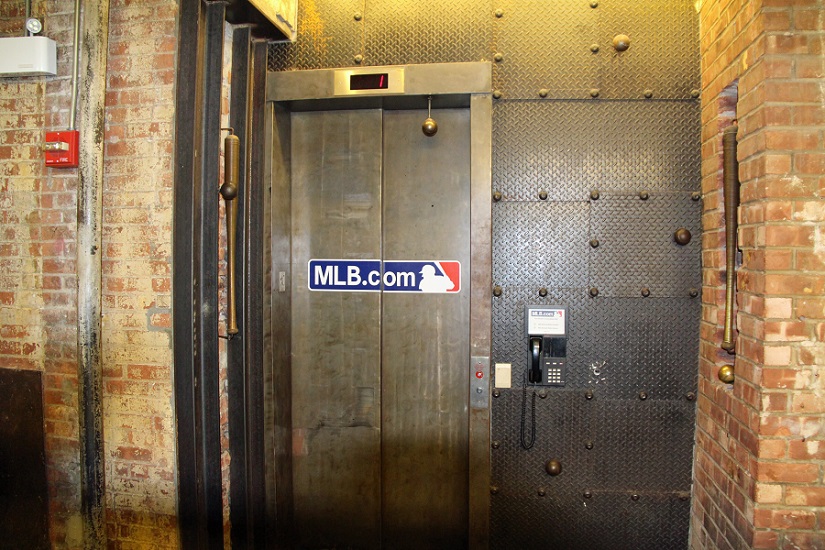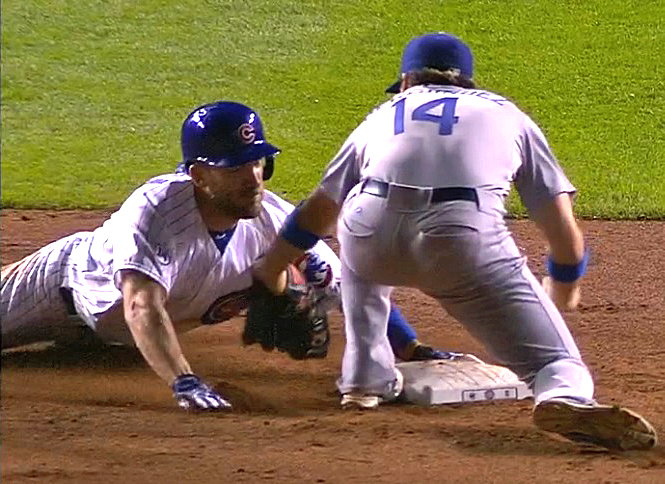Much to the pleasure of baseball fans, managers, coaches and the players themselves, Major League Baseball finally… finally adopted the use of video review (aka: instant replay) into the game, thus becoming the last major professional sport to do so. The move was applauded by nearly everyone who, for decades, had been clamoring to “just get it right.”
We, the very fans that drive the sport with our ticket and hot dog and beer and merchandise-buying dollars, were finally assured that incompetent umpires such as Angel Hernandez, C.B. Buckner, Laz Diaz and two or three others known for frequently blowing calls (“Balkin” Bob Davidson notwithstanding, since balks are not reviewable) would finally get the calls right – sometimes even in spite of themselves.
Yet after only a year and a half into the expanded use of video review, it is becoming clear almost daily that it is not the nirvana that we had hoped for, or even more so – that it should be.
How is this possible? How difficult can it possibly be for intentionally anonymous veteran umpires to watch a challenged call over and over from a variety of different camera angles in super slow motion in a comfortable room located in the MLB offices in fashionable Chelsea Market in Manhattan and still not get it right? This defies all logic and common sense, right?

MLB’s New York video review room is located inside of the historic Nabisco building (now called Chelsea Market) on Manhattan’s West Side. (Photo credit – Ron Cervenka)
Oh sure, it’s perfectly understandable that there will be instances where there is inconclusive evidence to overturn a call, but for the most part, we all knew this going in. But for a call not to be overturned when even one of several camera angles clearly shows that the umpire – without malice – made the wrong call and it isn’t, then the video replay system is flawed.
With baseball approaching the halfway mark of the 2015 season, there has been more criticism of the video review system this year than during all of last year in video review’s inaugural season. And while some of this may be due to the anticipated growing pains associated with something as revolutionary and drastic as video review, the flaws we are seeing, again, almost daily, fall well beyond mere growing pains.
I have to be honest, up until it was mentioned for the first time (and several times since) that it is quite possible that unknown umpire “X” in New York doesn’t want to overturn a call made by his good friend umpire “Y” in Los Angeles (or wherever) whose name is etched at the bottom of the official box score for all eternity so that he won’t look bad or develop a reputation of being frequently overturned never even crossed my mind until it was being suggested more and more by major league managers across the country. But when you start hearing highly respected MLB managers like Mike Scioscia, John Farrell, Bruce Bochy and (now) Joe Maddon saying (or at least hinting) that this may be occurring on a relatively regular bases, it becomes less about “getting it right” and more about keeping an umpire’s buddy off the hot seat – and vice versa.
Earlier this season during one of Dodgers manager Don Mattingly’s post-game interviews, the Dodger skipper kind of painted himself into a corner when he was asked about a clearly blown call that he had challenged that was not overturned. And while Mattingly admitted that he had said more than he should of about the incident the following day (and may have even been fined by MLB for doing so), he suggested that perhaps MLB should go to an independent arbitrator-type system where the field umpires do not know who is on the other end of the line in New York to eliminate the possibility of the ‘good ‘ol’ boy club’ or the “I’ll cover your back if you cover mine” mentality.
Additionally, Mattingly (and several other managers) suggested that the person(s) reviewing the calls in New York do not need to know the circumstances behind the challenge. All they need to do is look at the play without knowing what the score is, without knowing what umpires are involved, or without knowing what affect their decision will have on the outcome of the game (i.e. – that it’s the last play of a game with their decision determining the final results). They only need to see the play independent of anything else and make the call based on what they see.
Taking it one step further, Mattingly (and others) believe that reviewed calls should not be deemed “overturned” or “stand” but instead simply be ruled safe or out, fair or foul or home run or not. This removes the ambiguity associated with a call being overturned or standing – which, in essence, means that the review is under review and not the call itself. It’s certainly a lot easier to comprehend that the guy is safe or out than it is trying to figure out if the potentially blown call on the field has been overturned or stands. I mean, safe or out is pretty clear, right?
All of this comes to light because of the final play of Wednesday night’s game between the Dodgers and Cubs in which Cubs right fielder Chris Denorfia was called out at second base after trying to stretch a single into a double. Denorfia was called out by second base umpire Jordan Baker and in real time it certainly appeared that he was out. But Cubs manager Joe Maddon challenged the game-ending call – and understandably so. Although several camera angles were undoubtedly deemed inconclusive (which is a huge factor here), the center field camera angle clearly showed that Denorfia got his hand in and on the bag before Dodgers shortstop Kike Hernandez applied the tag to Denorfia’s chest – and there was nothing inconclusive about it.

Although other camera angles may have been “inconclusive,” this one certainly wasn’t.
(Video capture courtesy of SportsNet LA)
With Dodgers closer Kenley Jansen on the mound and two outs in the bottom of the ninth in a 5-3 ballgame, it’s highly unlikely that Baker’s upheld blown call would have changed the outcome of the game, but it certainly could have. It also explains why Maddon was absolutely furious after the game.
“I cannot believe the conclusion,” Maddon said. “Even as a fan, standing in the dugout at that particular moment, I wish whomever made that call could have been at Wrigley Field and looked at the big screen if they wanted to see something definitive.
“To say there was nothing definitive right there, I could not disagree more strongly,” Maddon added. “I have no idea why they would say that. It makes zero sense to me whatsoever. I’m just being honest. It made no sense.”
But it didn’t end here with the extremely well respected Cubs manager.
“To say it stands is not a really cool way to go at that particular moment with the game on the line, and it was obvious from that one shot that [Denorfia] was absolutely safe, no questions asked,” said Maddon. “Right now, I’m curious if you need more than one confirming opinion in regards to making the change, because that might be the worst non-overturn I’ve seen at this point.”
Sure enough, Maddon concluded his rant offering the same solution that Mattingly had, although he used slightly different terms than what Mattingly called arbitrators.
“I think it screams for an independent group back there to research the video, as opposed to working with umpires who are actually on the field,” Maddon said. “I think you should get a bunch of nerds back there who know how to look at the video, and then come to a conclusion. I think it would be much more interesting that way.”
Say what you will about Joe Maddon, he is always brutally honest – and usually spot on.




 June 25th, 2015 at 6:00 am
June 25th, 2015 at 6:00 am  by Ron Cervenka
by Ron Cervenka  Posted in
Posted in 
